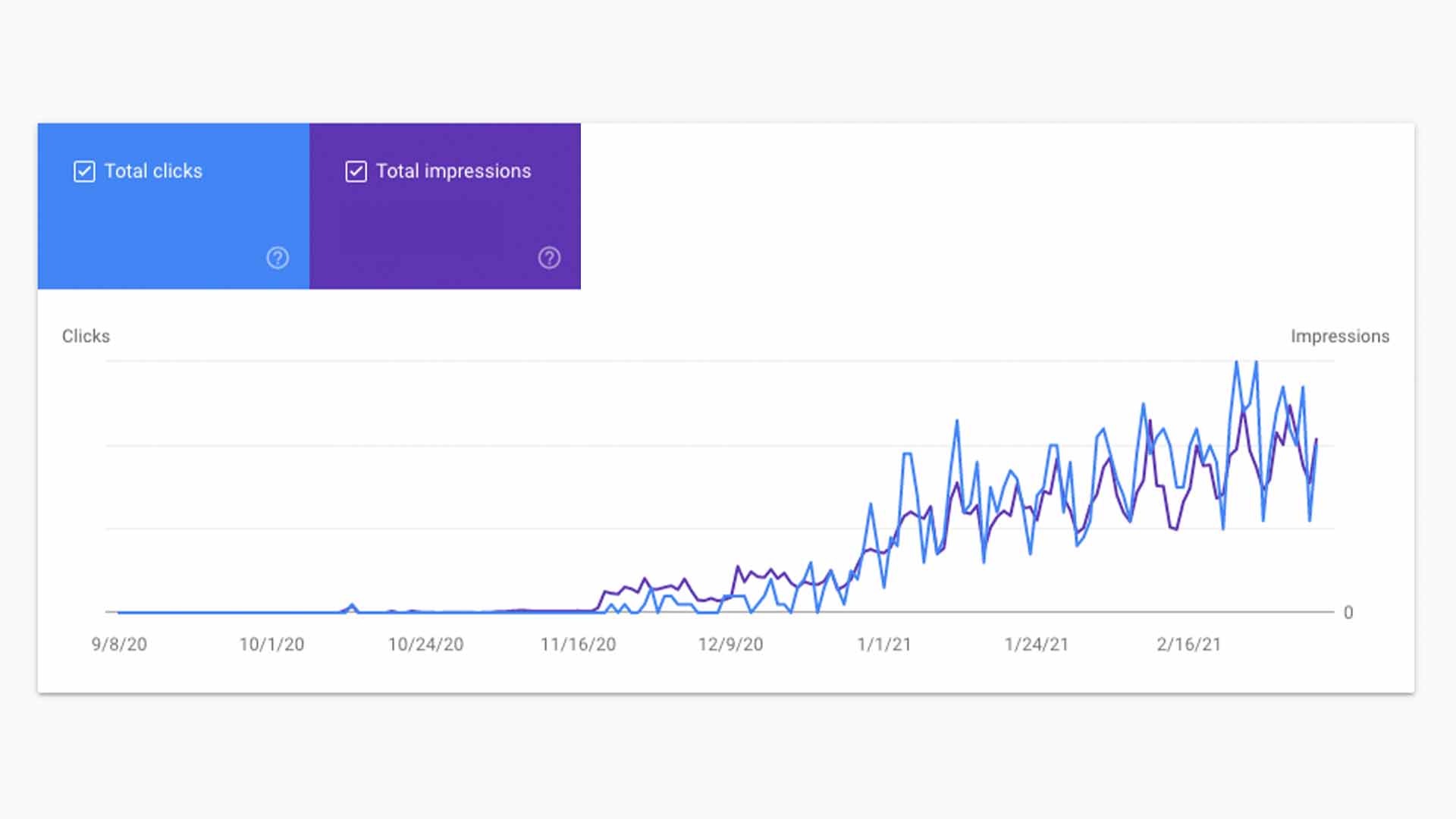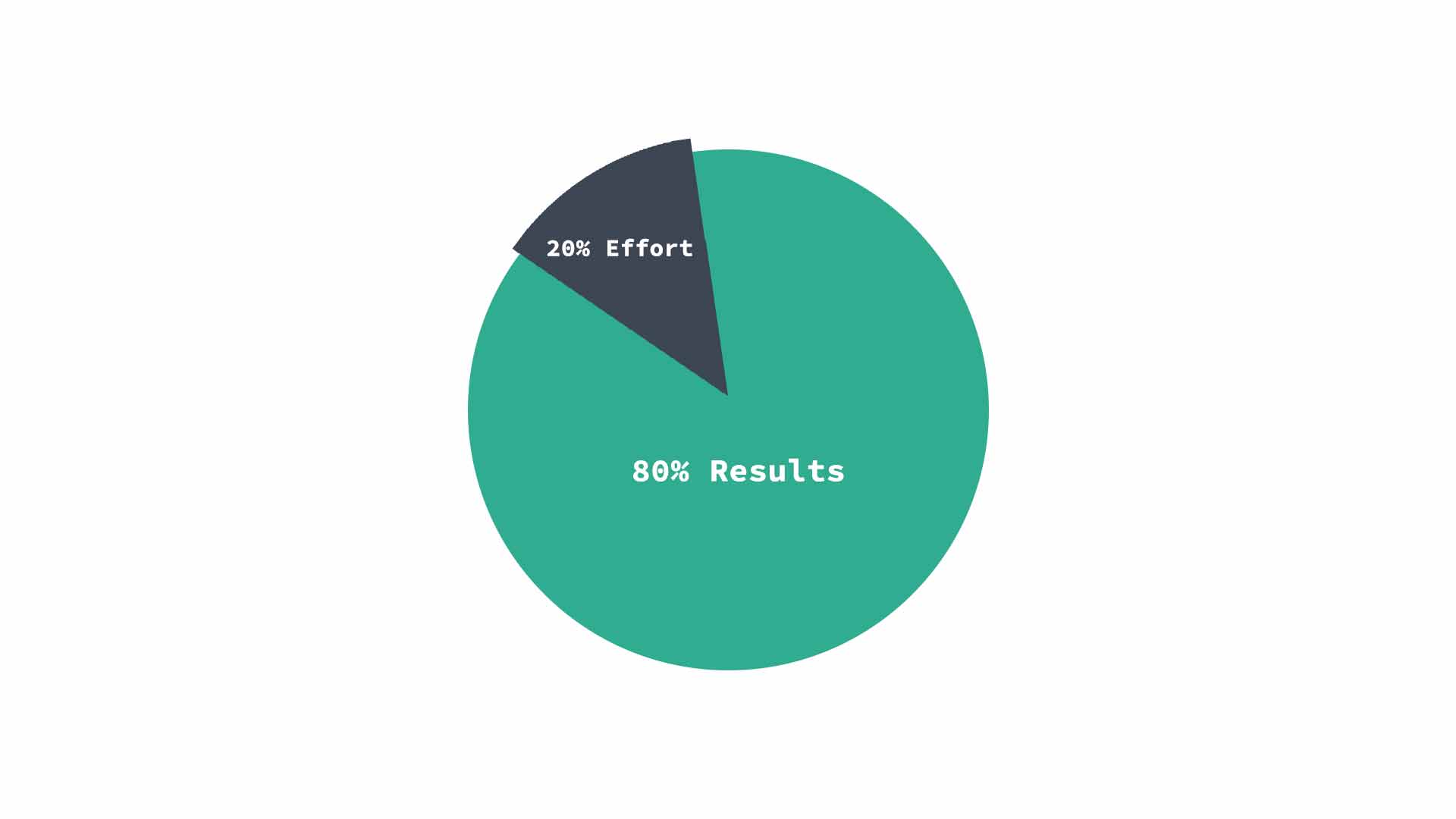I've published 100k words and 1% generates 90% of the traffic

By Ryan Carruthers
March 8, 2021
The one to rule them all
It took six months to publish ~70 blog posts on Acadium’s blog and the majority of results that they’ve generated can all be traced back to one article: the first one I published.
This article is the result of me trying to understand if I’m a terribly inefficient content marketer or if I’m on to something. Read on to hear the verdict.
“It’s mind-boggling that when we look at the stats, one article is what’s led to the blog’s growth.”

Some context
What is Acadium?
Acadium matches online business owners with aspiring digital marketers for three-month remote apprenticeships to help them launch or grow their careers in a rapidly changing job market. The apprenticeships offer accessible training for anyone to launch their careers with no prior experience.
What does this have to do with me?
I was a user on Acadium when I graduated from university amidst the pandemic lockdowns. By signing up to Acadium I was able to work with real business owners on projects that gave me the much-needed experience to begin my career.
Publishing content for the past 6 months
After sharing my experience with Acadium’s team on their podcast they offered me a contract. My role didn’t start on content but has evolved over time. My main responsibility now is content-driven growth.
“If I didn’t hear about Acadium through word-of-mouth and instead, were to read this article when I had first come out of university, I would have signed up..”
The content strategy
When I started championing content at Acadium the plan was to create content that would engage potential apprentices to sign up. Basically, I was writing to attract people like myself to the platform.
When I barely knew anything about content marketing I was trying to figure out what to write for my first blog. Since I fit our persona for users I was going to write an article that someone like me would read.
What did I decide on?
I wrote a blog titled “How to get a job after college with no experience.” That’s what I was asking when I graduated. This article was the first one I published and six months later it’s the reason for the majority of organic growth the blog has seen.
Why did this blog perform so well?
The blog is by no means a work of art. Depending on when you read this I may have already gone in and made updates to it.
That being said, it did check a lot of boxes which I think made it rank well. Here’s my hunch on why the article performed so well:
It was conversion-focused
The article didn’t beat around the bush. It gave actionable information on how to gain experience when you graduate. It makes it clear that the easiest way to gain experience is by working with real businesses. But it’s hard to get a job with no experience. So what do you do? Sign up to Acadium, of course.
It was optimized
Before I started learning about the more technical aspects of SEO I would write articles that answered questions people were asking on Google. I would Google: “how to get a job with no experience” and write down all the related questions and people-also-ask snippets. These would be my headings. This is an easy way to optimize an article if you’re new to search engine optimization.
It focused on the pain points of the users
The content marketing agency Convince and Convert goes against the grain of what is traditionally accepted as best practices for SEO. Instead of letting keyword research dictate what you decide to write (ranking for keywords with high search volume and low competition), Convince and Convert suggests finding keywords after you decide on topics relevant to your audience. By doing what they call “Pain Point SEO” you’ll write articles that solve the problems of your readers. The keywords will naturally follow.
By focusing on Pain Point SEO the article was actionable for readers. If I didn’t hear about Acadium through word-of-mouth and instead, were to read this article when I had first come out of university, I would have signed up.
The Pareto Principle
Why did only one article perform well? The easiest answer is the Pareto principle or the 80/20 rule.
The 80/20 rule states that roughly 80% of consequences come from 20% of the causes. When you Google the 80/20 rule with regards to content marketing you enter a heated debate around if promoting or producing should take up most of your time.
What the debate doesn’t talk about is how to handle the disproportionate returns from the moat of content you publish over time. My take on the Pareto principle with regard to content is as follows:
80% of the results you get from the efforts you put into content will be generated by only 20% of what’s published.

“Content marketing is all about experimenting. I wouldn’t have known which articles resonated the most if I didn’t publish all 70 of them.”
We published around 70 articles over 6 months with each being around 1500 words. So of the 100,000+ words published the ~1000 word “How to get a job after college with no experience” article was the only one that mattered.
So in reality, instead of 20%, only 1% of the content I published made a difference to our organic traffic.
Now I’m not saying that the other 69 blogs were useless. Many of them rank for relevant keywords and generate traffic and, more importantly, signups. Some articles don’t rank as well but do a better job generating signups. Other articles are great for re-engaging users by highlighting new opportunities on the platform.
But it’s still mind-boggling that when we look at the stats, one article is what’s led to the blog’s growth.
Is that bad?
How to leverage the Pareto Principle to grow your traffic
When I realized that only one blog post was doing the most I questioned what I was doing with my time for the past 6 months. Going back to the 80/20 rule I learned that instead of spending 80% of my time promoting content and 20% creating it across the entire blog I’d only promote what I knew worked really, really well.
Why would I spend 80% of my time promoting content that doesn’t rank as well? Why wouldn’t I double down on what’s already ranking? I could compound the results the article was already generating by repurposing and promoting it again and again.
I can’t claim this realization as an epiphany. I learned it from Sujan Patel in his blog.
So what can I do with this information?
I can go back to our blog, apply what I’ve learned about Pain Point SEO and the 80/20 principle:
- Write more blog posts centred on solving the real problems that our users are facing;
- Use traffic analytics to determine the highest performing articles and,
- Spend the time needed to promote the hell out of what works.
Quality over quantity is what matters at the end of the day.
I’ve had the luxury of experimenting with content for the last 6 months to find out what works. Now it’s clear which articles perform best. Going forward we’ll spend more time producing those kinds of articles and stop producing what doesn’t work.
Content marketing is all about experimenting. I wouldn’t have known which articles resonated the most if I didn’t publish all 70 of them. So they aren’t a waste after all.
I’ve published over 100,000 words over the last 6 months and only 1000 of them have generated the most meaningful traffic.
— Ryan Carruthers (@ryancarr678) March 5, 2021
Am I a bad content marketer or does the 80/20 rule apply to SEO?
Effective ways to promote content online when you have no following
In addition to producing more of what we know works, we can promote more. There are so many effective ways to promote content online.
- Create Tweet storms.
- Go to Quora to answer questions and link your blog when relevant.
- Join conversations on Reddit and after engaging communities link your article where relevant.
- Join communities in your niche on Facebook, Slack, Discord, etc. And share your articles.
- Submit your articles to news aggregating platforms like Mix, Feedly, Zest.is, and more.
- Find a whole checklist on how to repurpose content on Ross Simmonds’ blog.
You can also find practical examples of promoting content that include quick wins in Dominic Kent’s blog. When you’re overwhelmed by all the ways to promote content this blog is a great place to start.
Those are just some of the options you have when repurposing and promoting your content. One key thing to remember is no one appreciates you promoting your content.
If you’re entering communities, add value first. Talk to people and comment on threads. Answer and ask questions. Then, when you’ve engaged with the community members, share your content when it’s helpful and relevant to a conversation.
So am I going to get fired?
At the beginning of this post, I said this article is the result of me trying to understand if I’m a terribly inefficient content marketer or if I was on to something.
Based on what we now know about the Pareto Principle and how it unevenly distributes the gains from your content marketing efforts I don’t think I’ll lose my job.
That being said, I should work on getting more than only a 1000 words to generate traffic over the next 6 months.
Check back with me in September. ✌️
